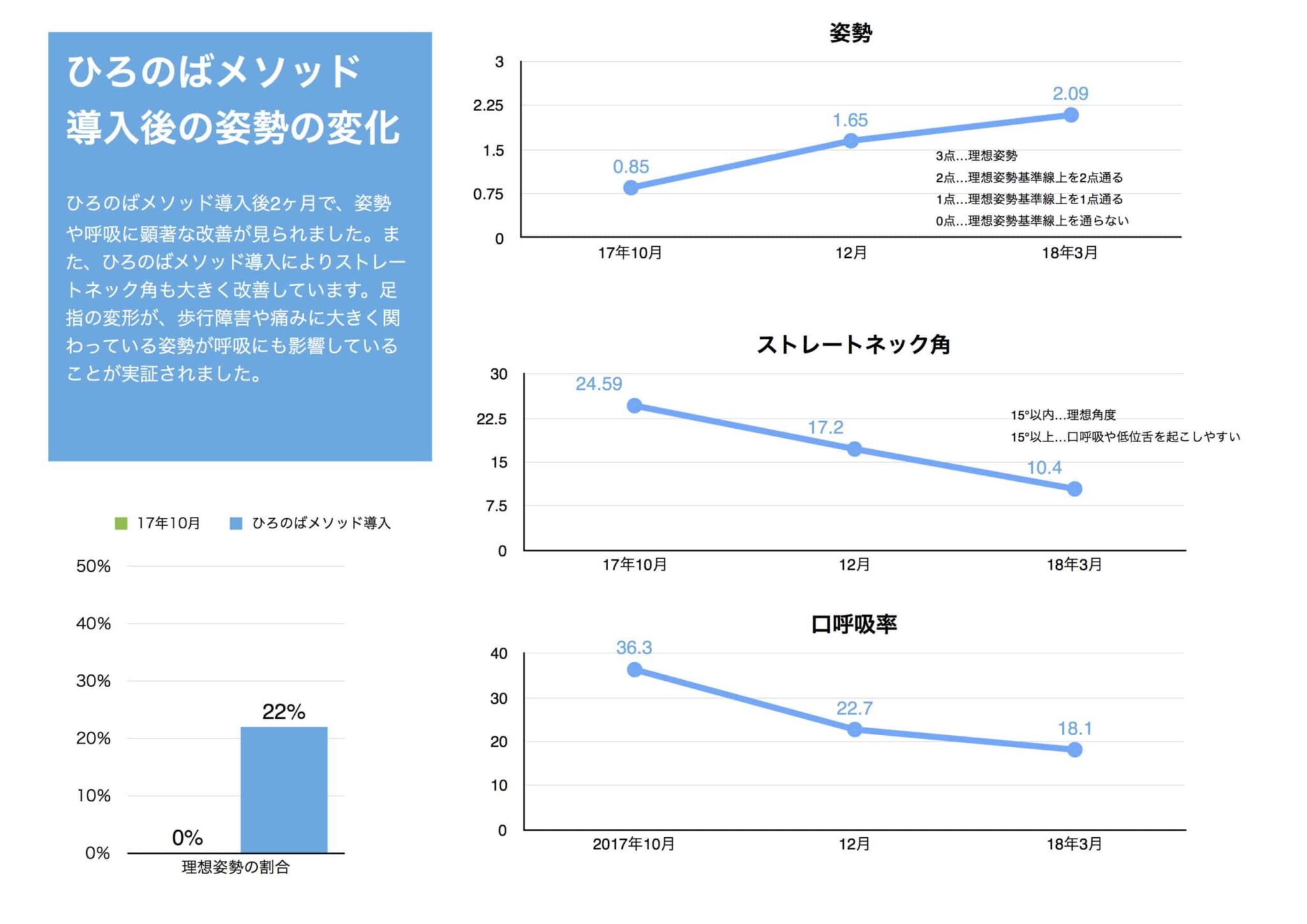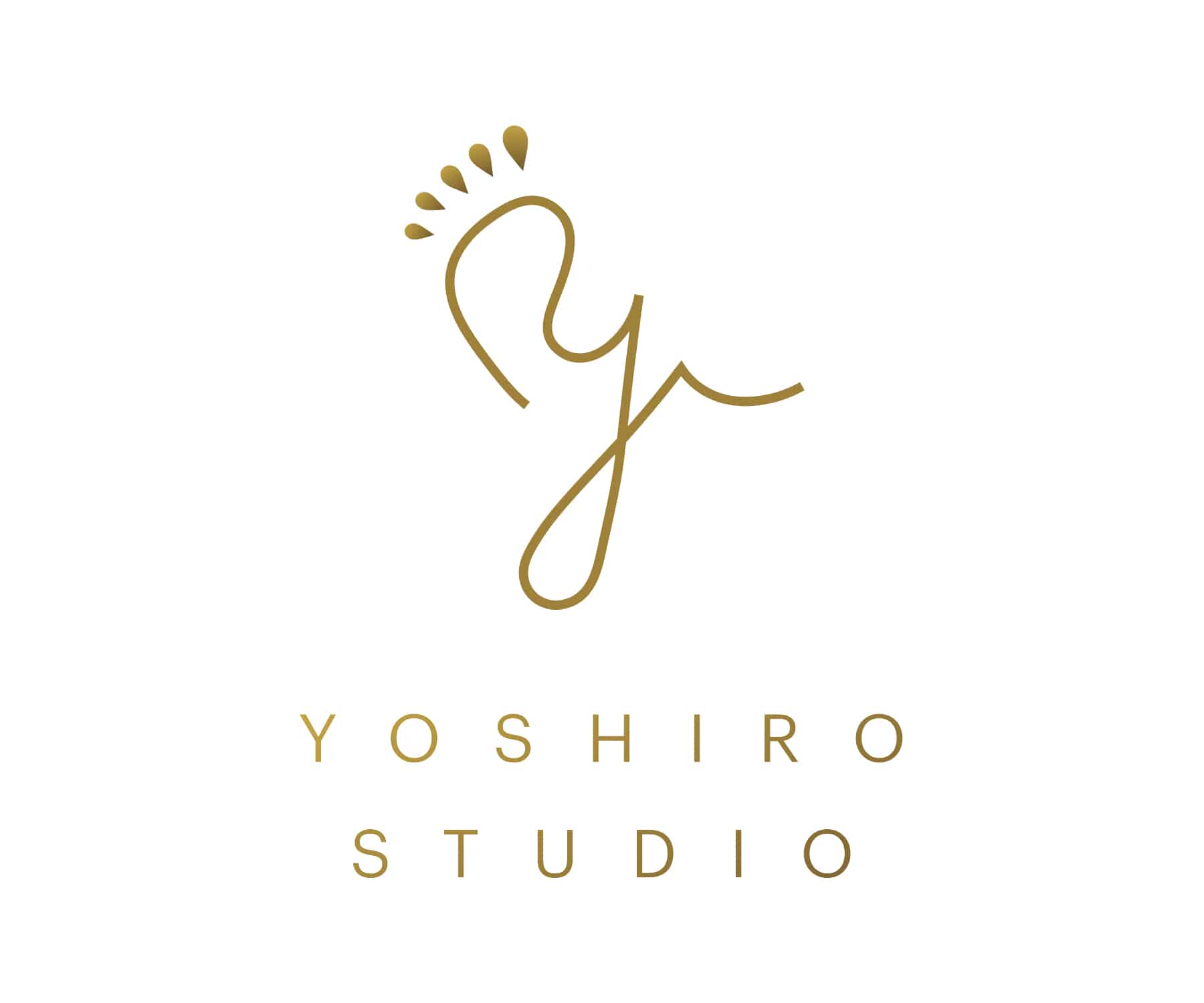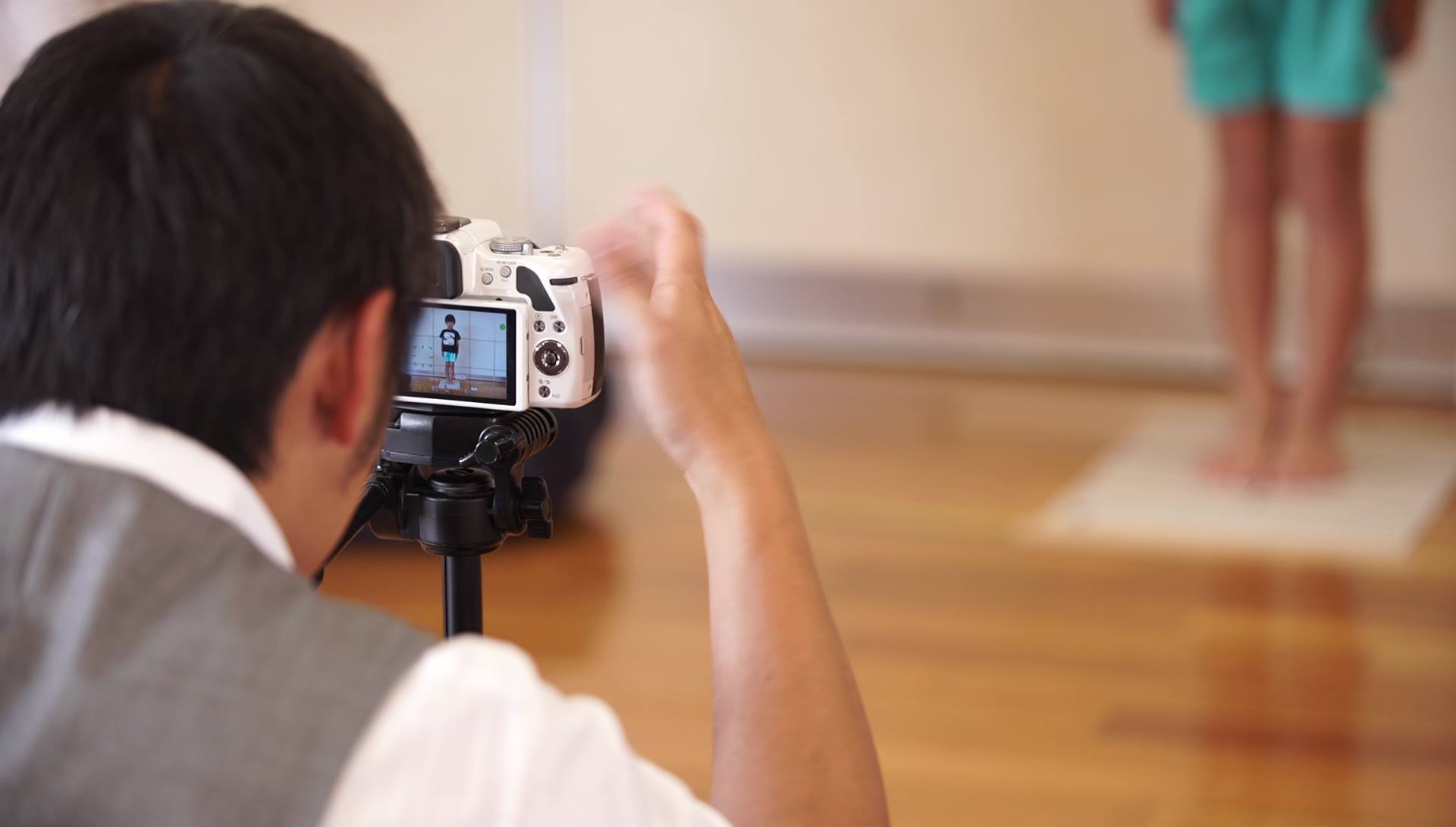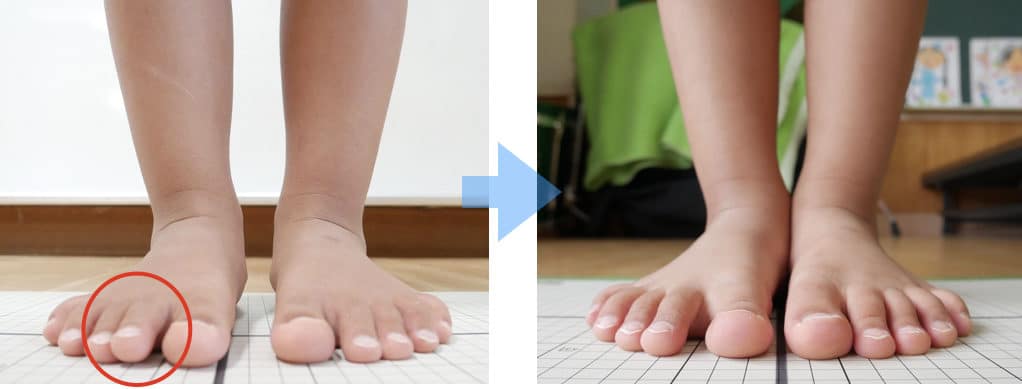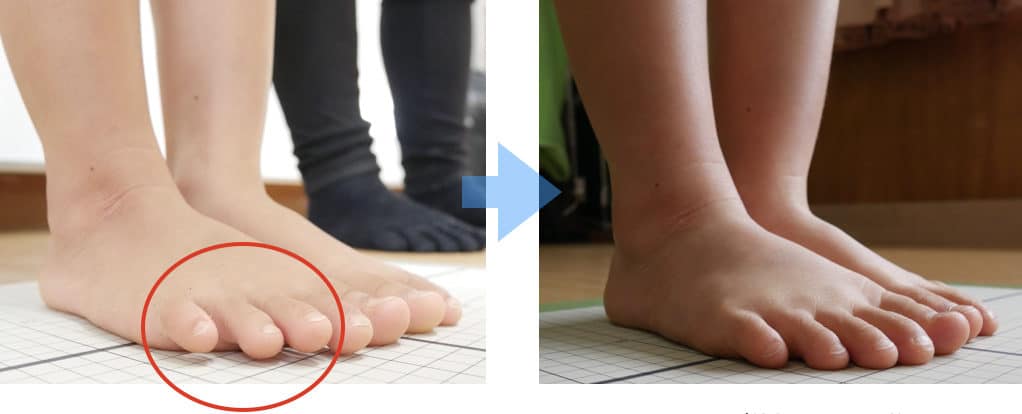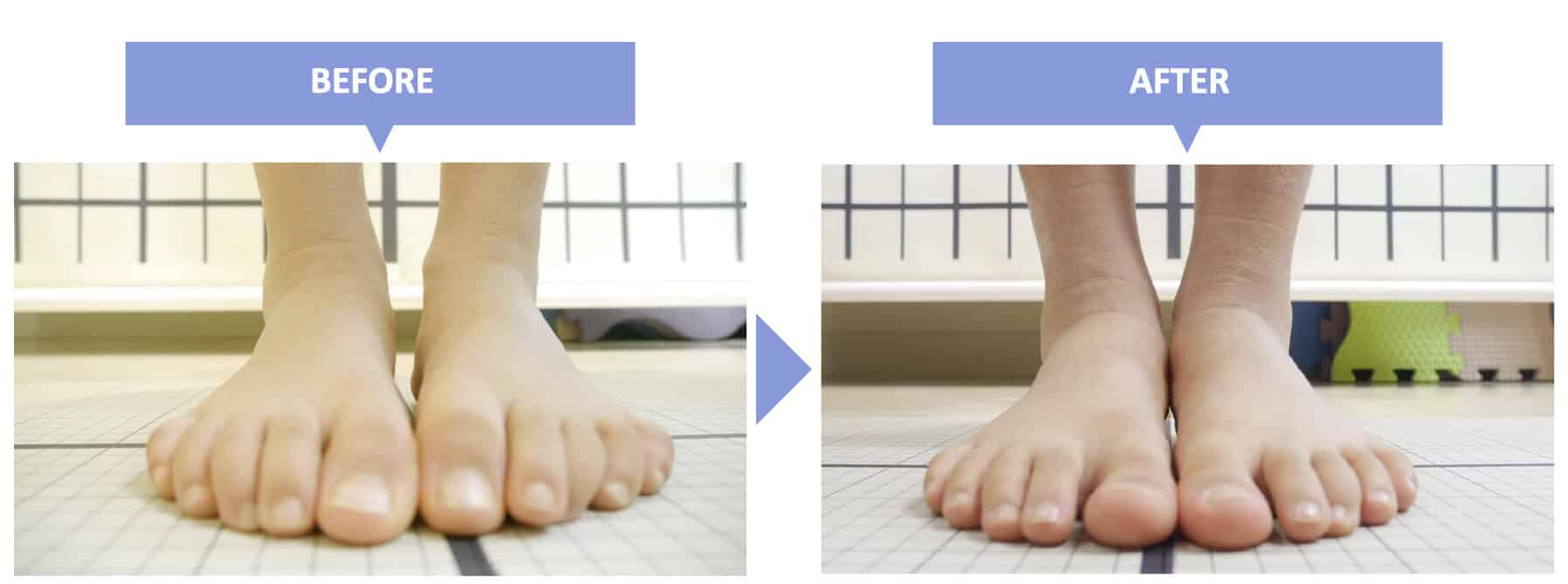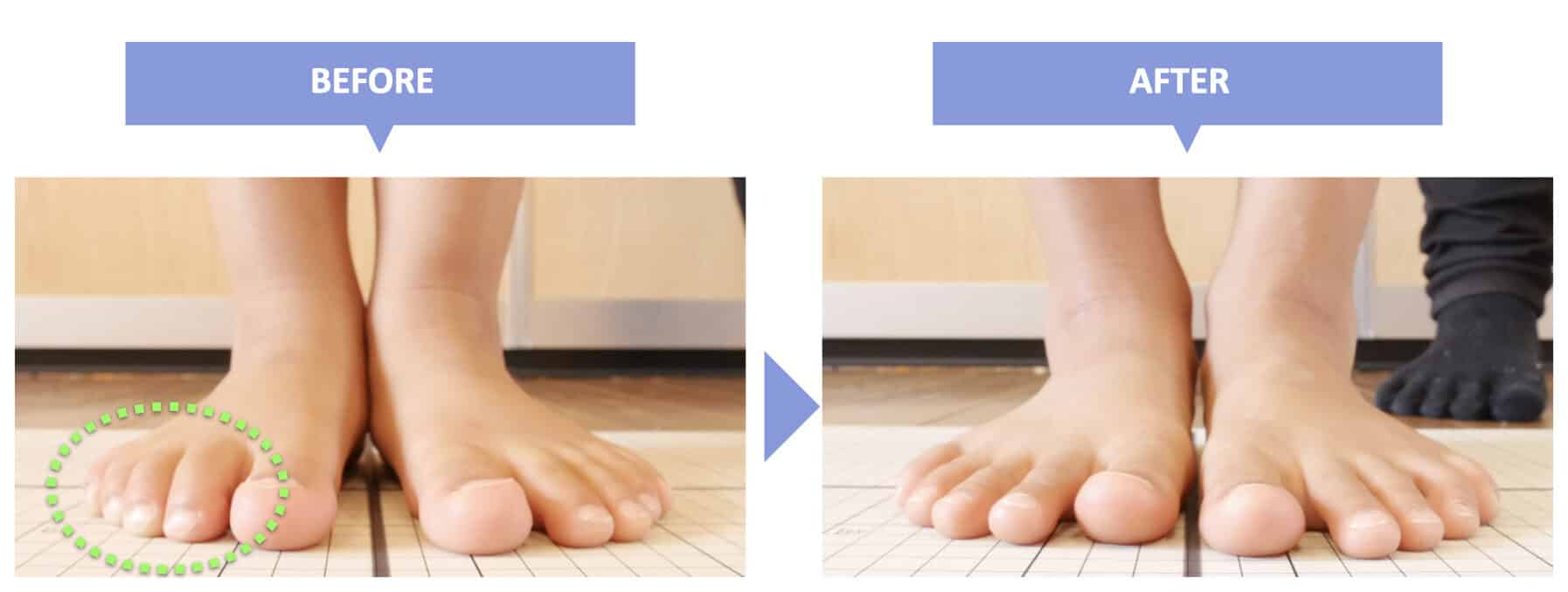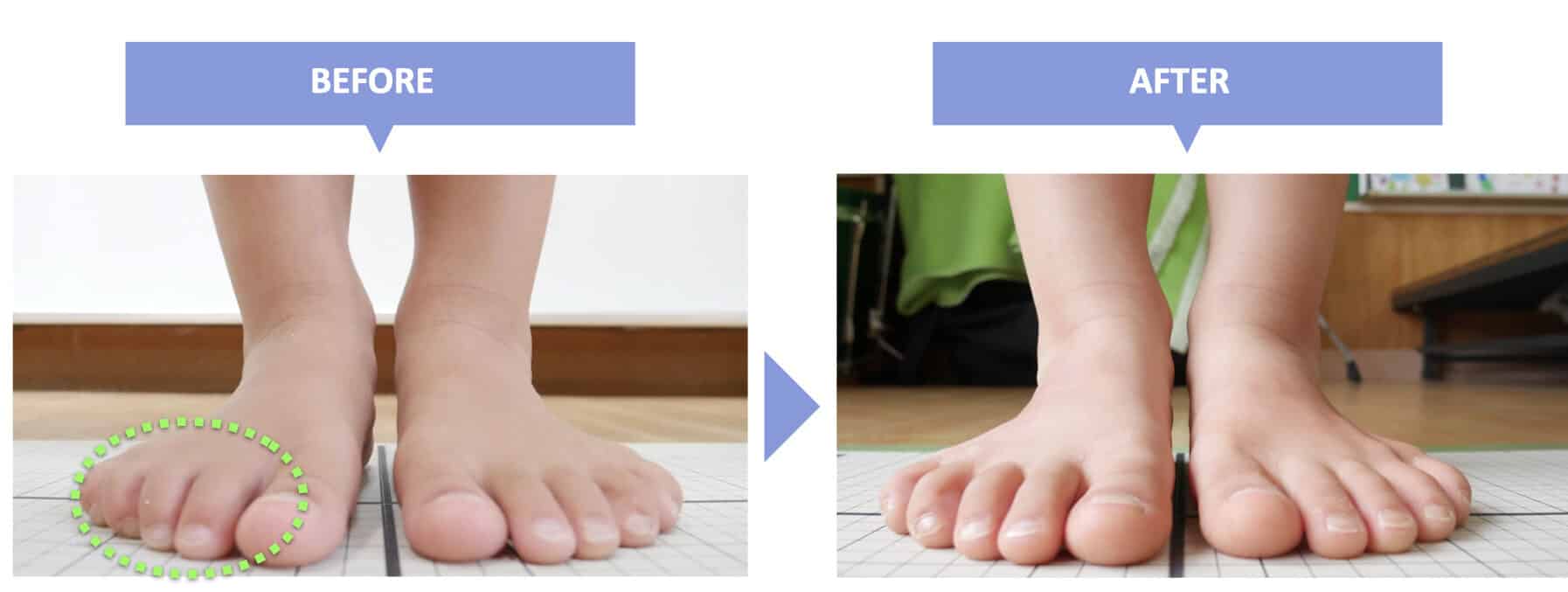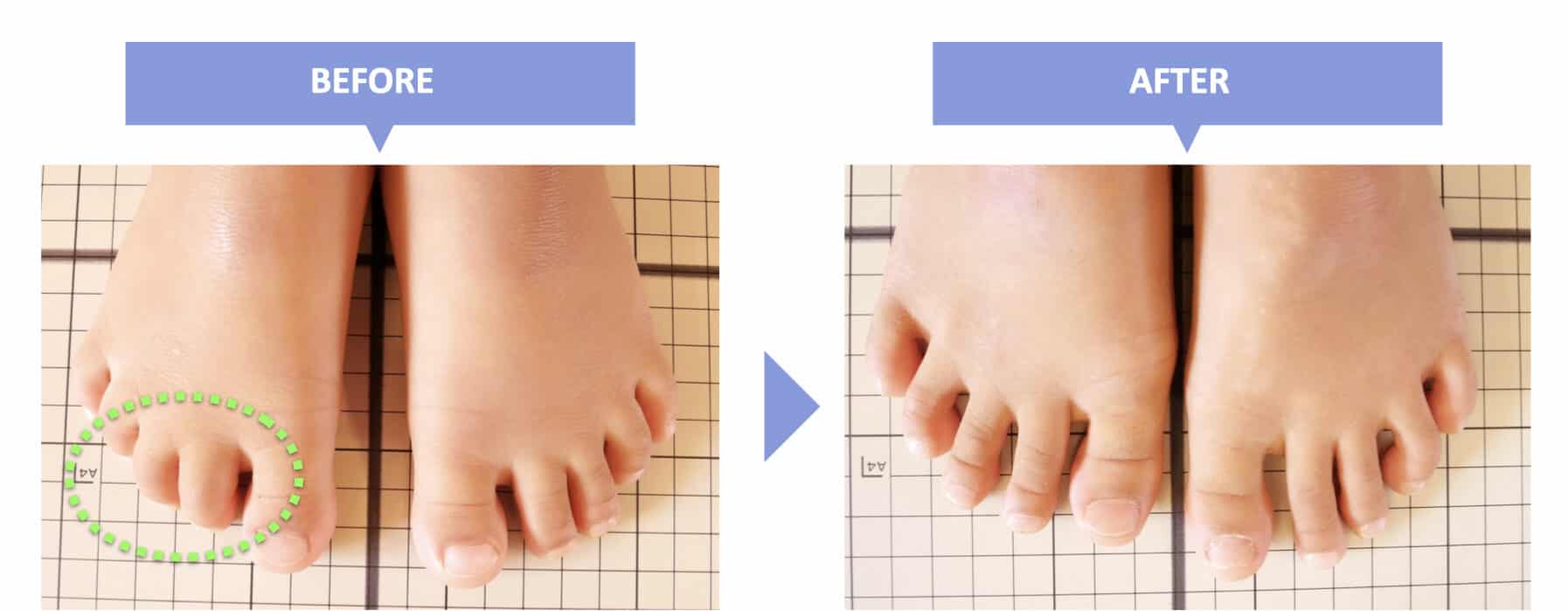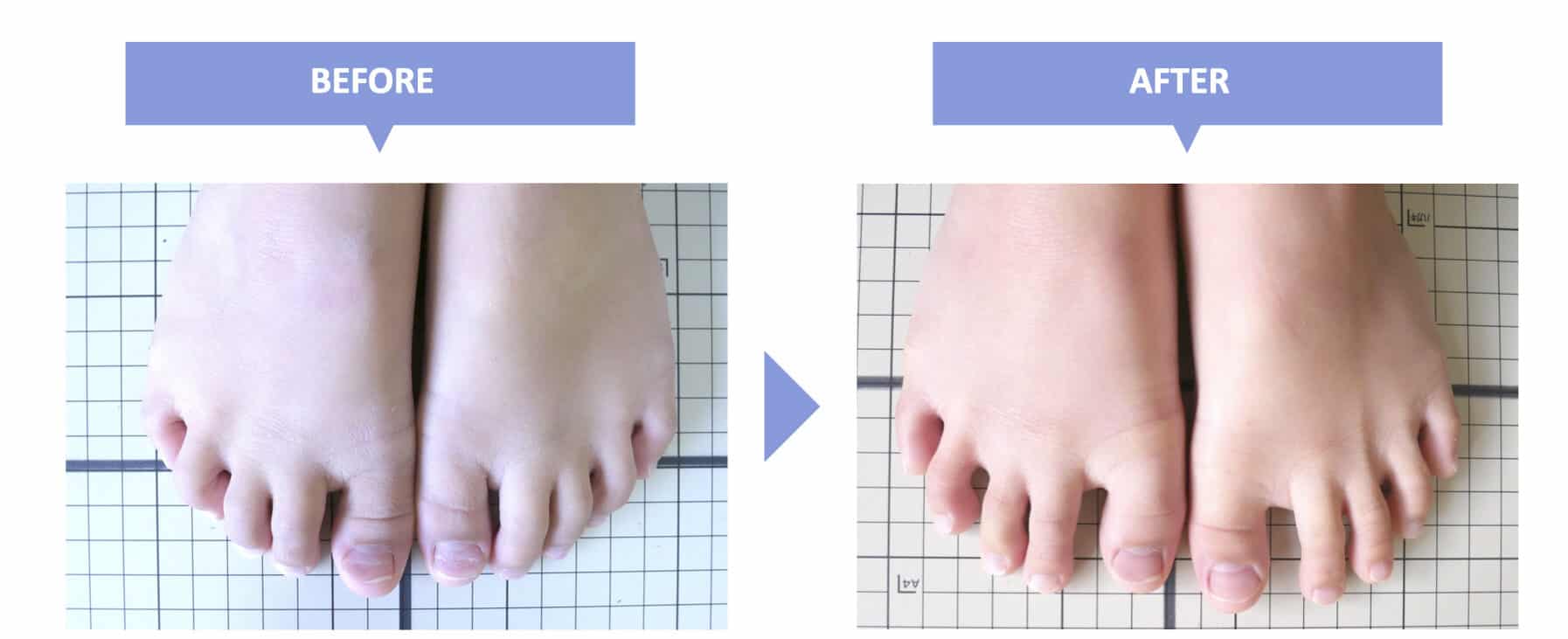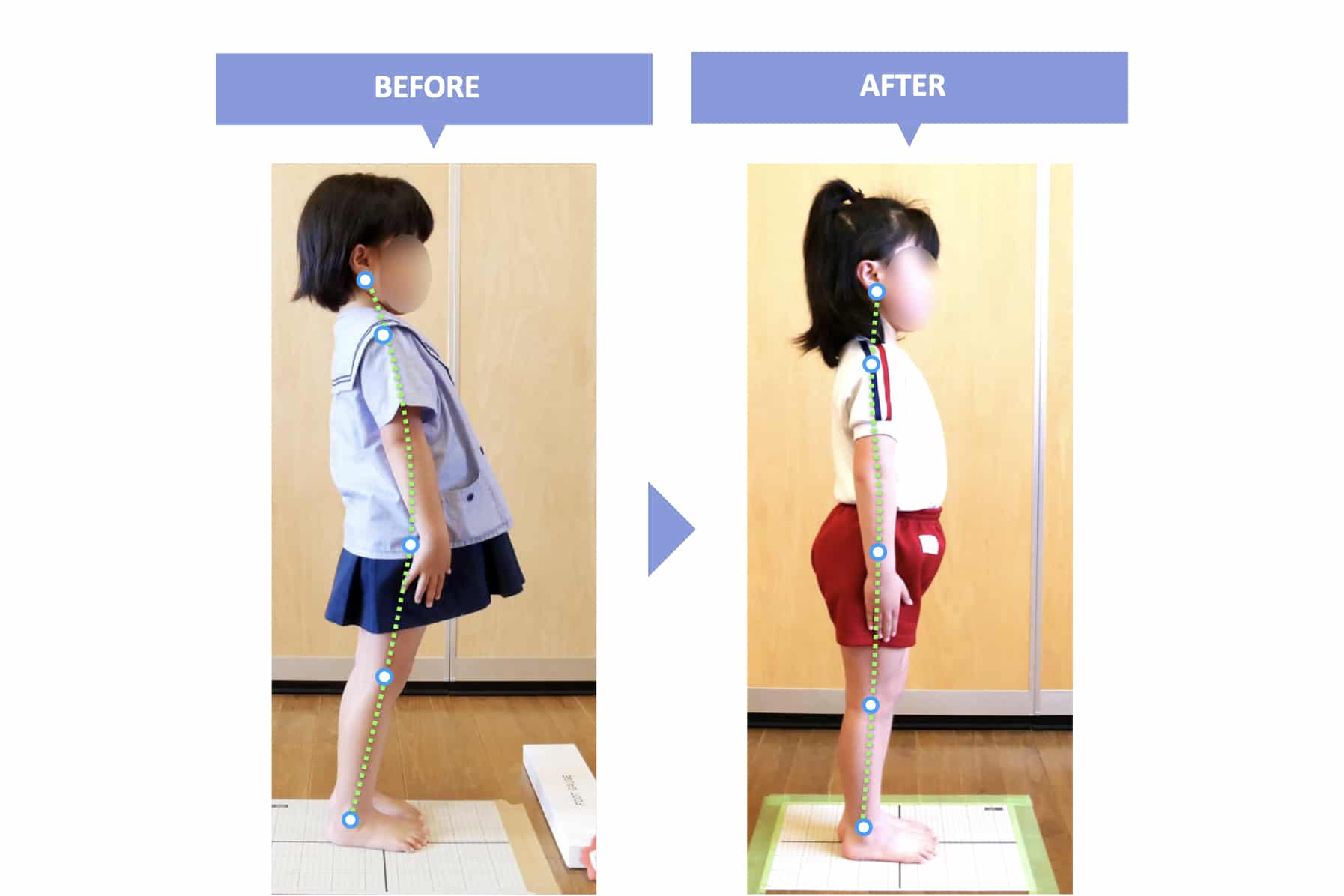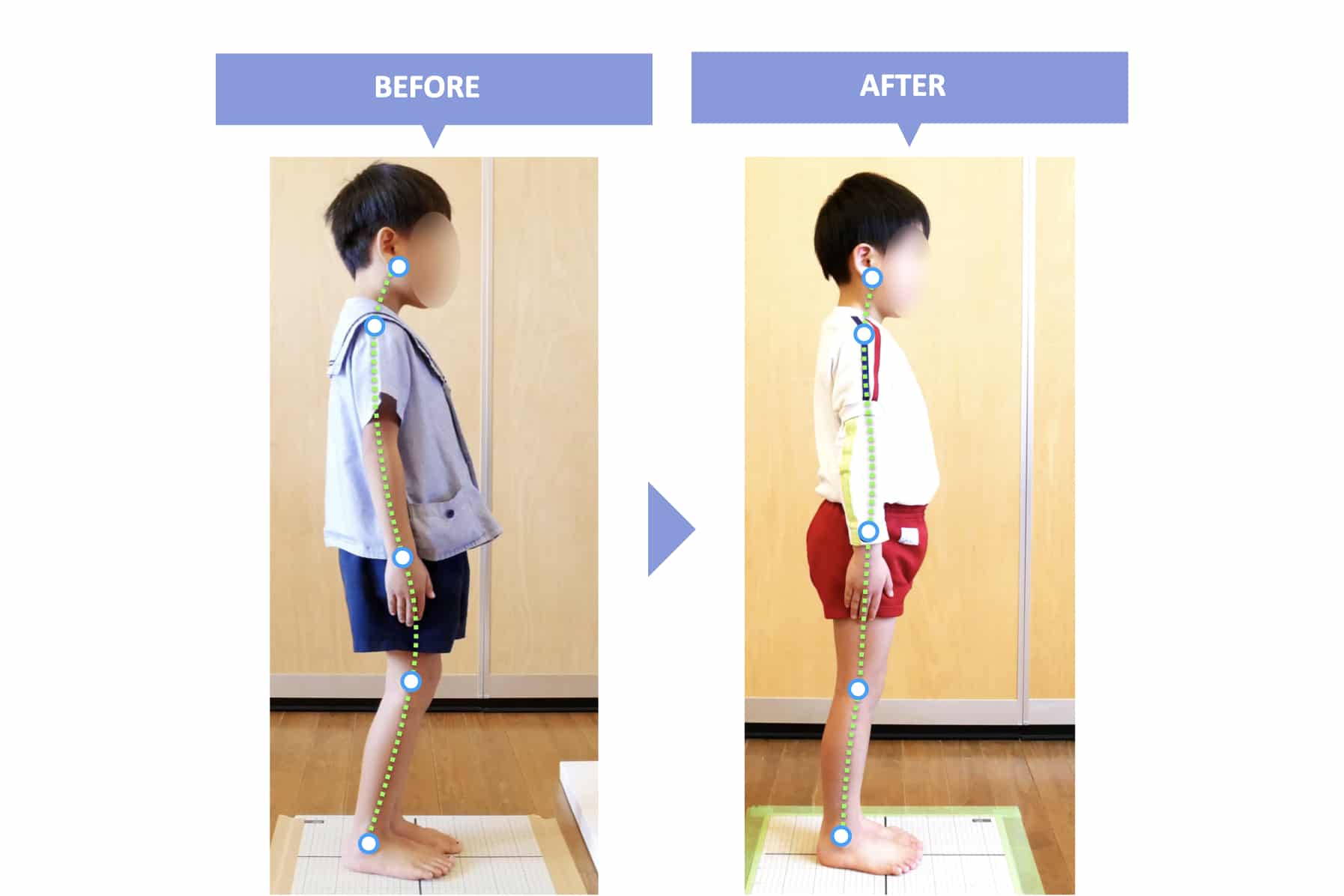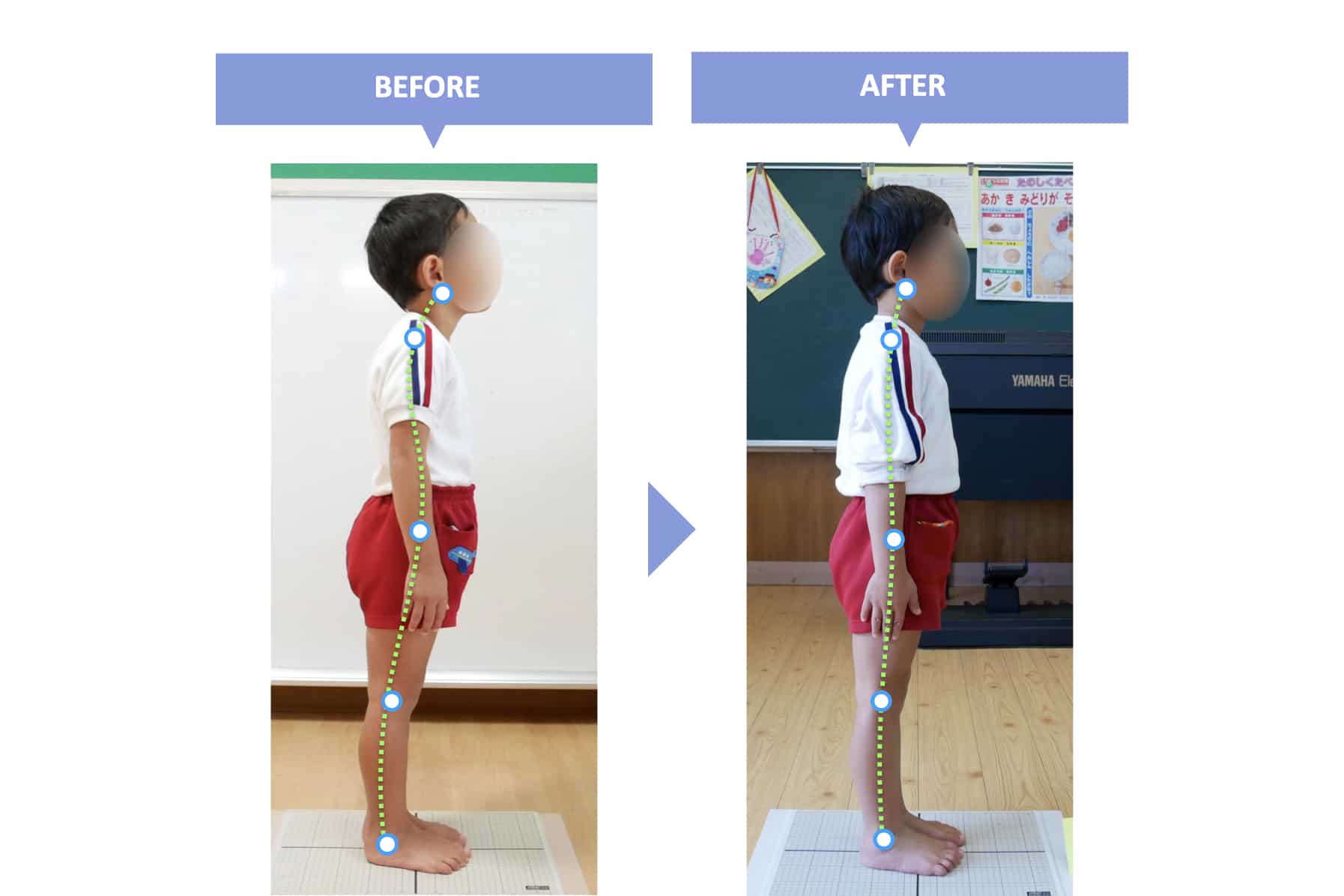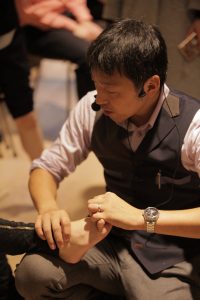Nursery School Survey
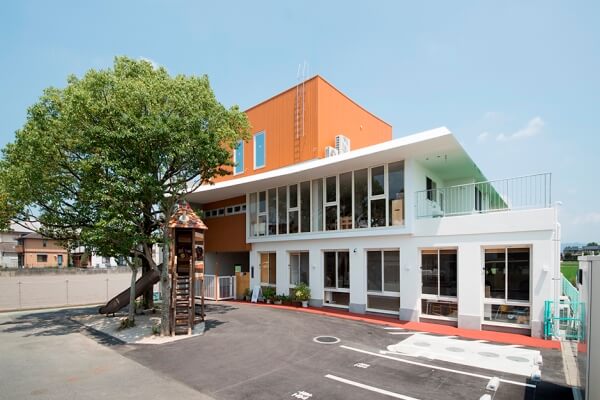
In 2012, at the request of the Chikugo District Nursery School Teachers Association, a study was launched to determine why today's children are losing their motor skills.Deformity of the toes due to the way shoes are worn and chosen was found to be one of the causes.Therefore, we spent a year investigating how much the "hiro-no-va gymnastics" would change their motor skills.Then, in all preschools, it was proven that the program improved mobility and was effective in preventing falls, and was featured on NHK.
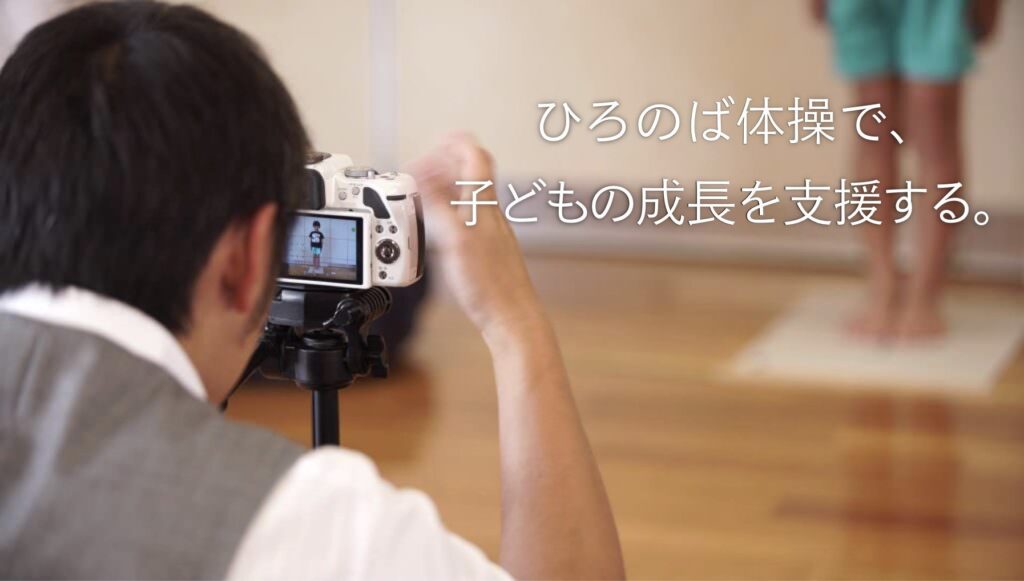
In 2017, as a first step toward creating a new country with zero bedridden children, a physical therapist and a dentist teamed up to start a study at a nursery school in Kurume City. The goal is to improve the posture of the preschool children, and the research will be conducted over the next year in collaboration with medical professionals. The research was triggered by the fact that many preschoolers with poor posture have bad teeth. I, a physiotherapist with a case study of children whose posture was improved by being able to stand stably with their toes spread and their teeth aligned differently, and a dentist who corrects posture, bites and braces, decided to investigate the actual situation and find ways to improve it together. We hope to get proper data and use it to improve the health of children.
・Resurveys are conducted every 3 months (November, February, May...) 1 year follow-up
5 minutes of hiro-no-va gymnastics and 5 minutes of oral muscle function training are performed daily at the nursery school.
Physical therapist scores foot and posture assessment
Dentists score the evaluation of dental alignment.
Percentage of toe deformities
hallux valgus
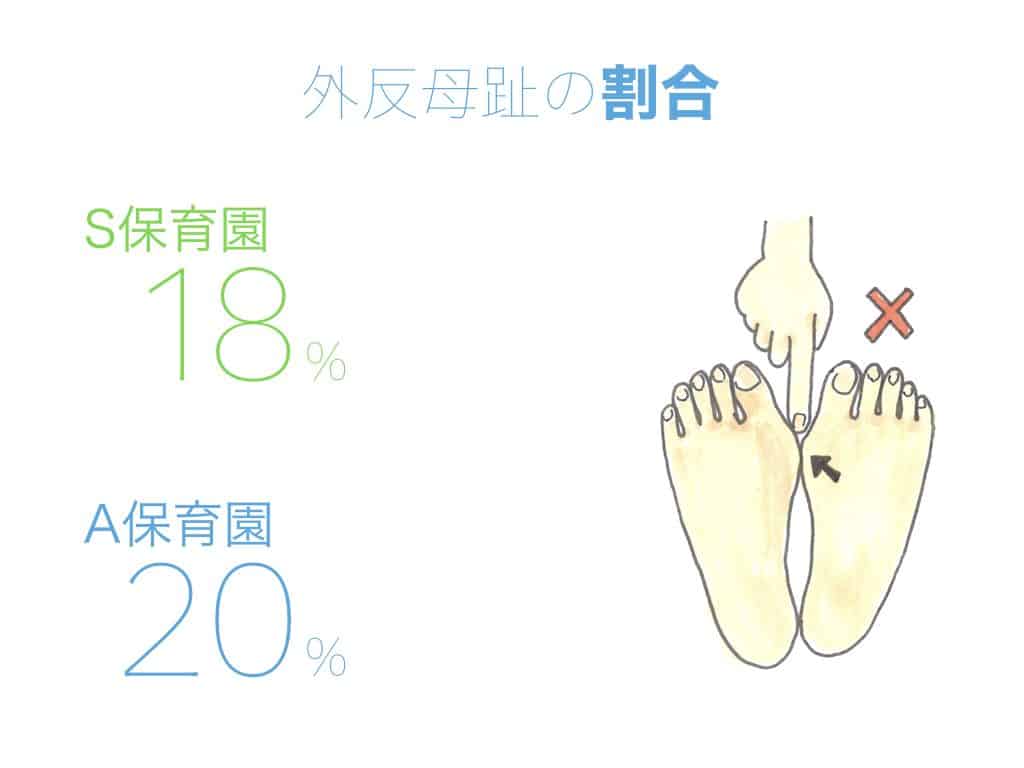
Percentage of hallux valgus
Nursery A: 20%.
S nursery school: 18%.
The percentage of children with hallux valgus was already close to 20% at the age of 5. It is no wonder that the number of children with bunions is increasing. If this number is even for nurseries that practice barefoot childcare, we can assume that the number is much higher in nurseries where shoes are worn both indoors and outdoors.Predicts a higher probability of future loss of mobility, leg pain, and back painThe following is a summary of the results of the project.
hallux valgus
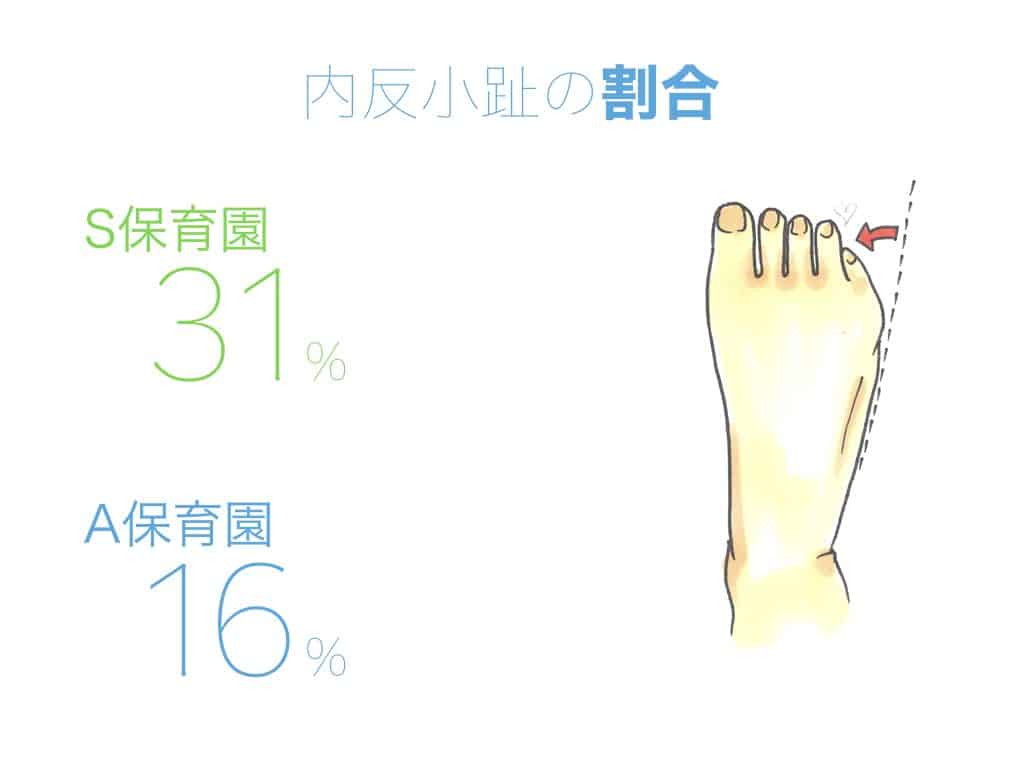
Percentage of hallux valgus
Nursery A: 16%.
S nursery school: 31%.
Both of these nurseries practice barefoot childcare, but the numbers varied. The cause is unknown, but on average, more than the percentage of toes,Assume higher probability of future sprains and knee pain (e.g., growing pains)The following is a summary of the results of the project.
mirror finger
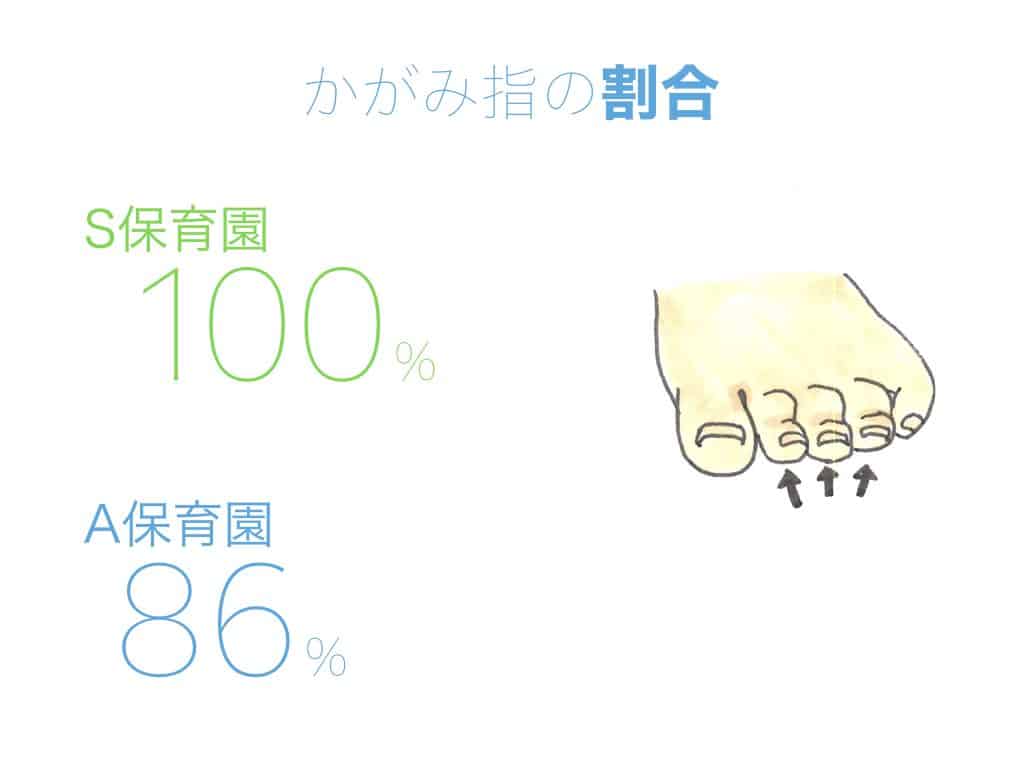
Percentage of bending fingers
Nursery A: 86%.
S nursery school: 100%.
Bending toes cause the child to walk flat-footed with only the back of the foot, and if the child continues to walk in this manner, the function of the foot muscles will deteriorate, which will lead to hallux valgus in the future. It also greatly affects posture, if almost 100% in a 5-year-old child,By the time they enter elementary school, they have a higher probability of developing a hunched or warped back, causing lower back pain.It is predicted that
ring finger
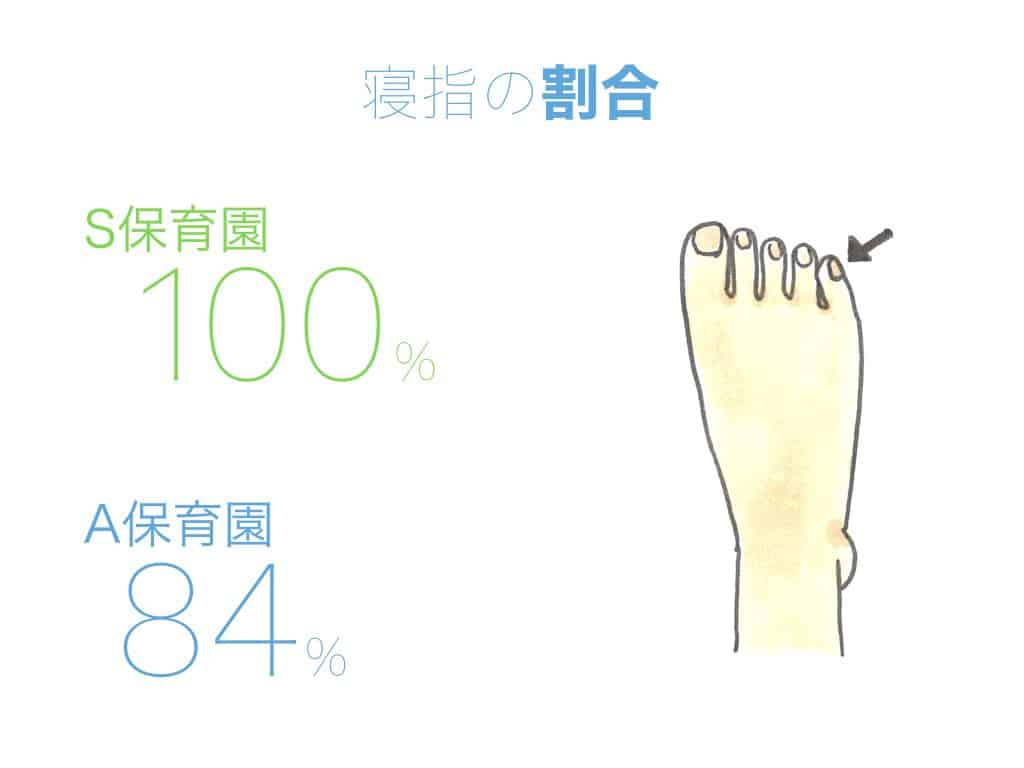
Percentage of sleeping fingers
Nursery A: 84%.
S nursery school: 100%.
Among the toes, the little toe had the highest percentage of sleeping toes. It is certain that this is linked to the crouching toe, as it is mainly caused by muscle weakness. The pinky toe sleeping toe is similar to the hallux valgus,Assume higher probability of future sprains and knee pain (e.g., growing pains)The following is a summary of the results of the project.
Measurement with plantar pressure measuring device
Number of toes on the ground
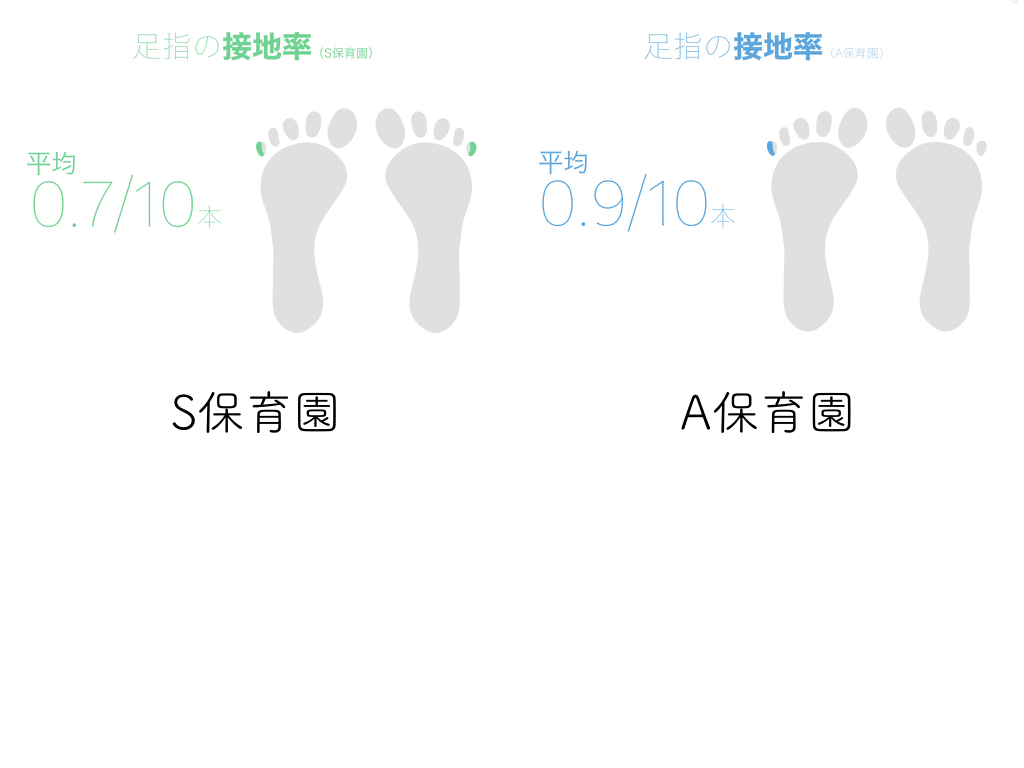
Percentage of toes actually touching the ground
Nursery A: 0.9 bottles
S nursery school: 0.7 bottles
Even toes that appear to be on the ground may not be on the ground due to insufficient pressure when measured with a plantar pressure measuring device. In both parks, not one out of ten toes was on the ground. It is called a floating toe, but it is similar to a bent toe and may be in the future.Increased probability of hunching or slouching, causing lower back pain.It is predicted that In the case of the elderly, this may lead to falls.
Position of center of gravity
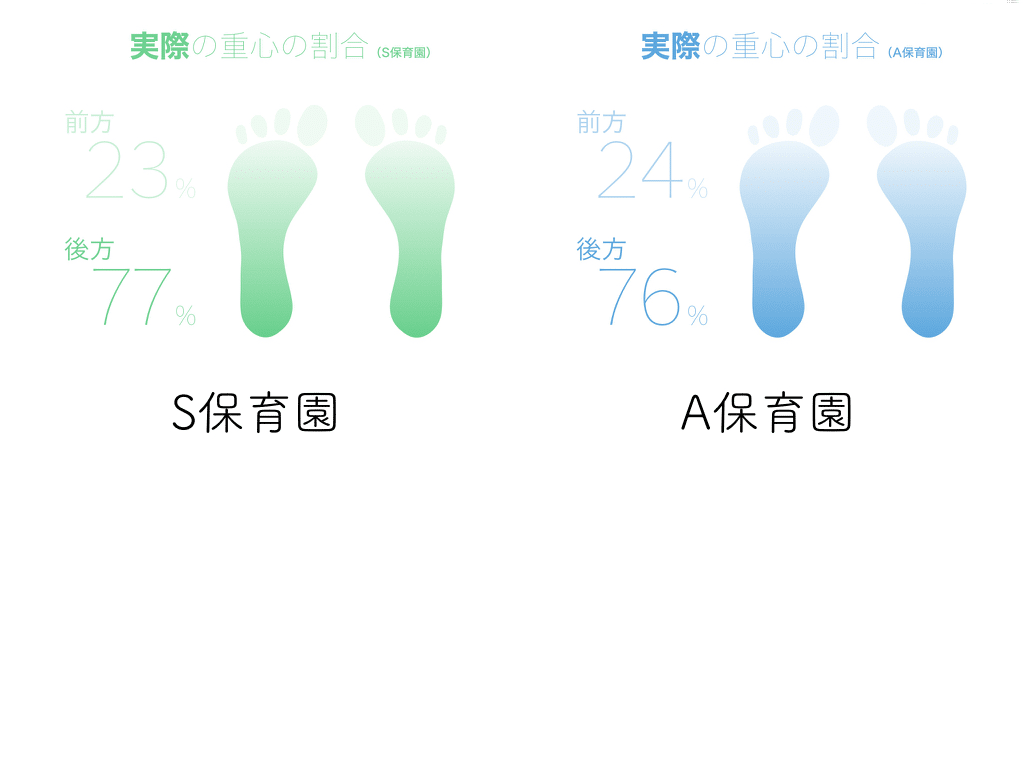
Position of center of gravity
Nursery A: 24% forward
S nursery school: 23% forward
Basically, the ideal center of gravity is 50% forward and 50% backward. If there is a toe deformity such as a floating or bent toe, it is easy to have a heel center of gravity. When the center of gravity is backward,Decreased mobility, tendency to hunch back and slouch, and falls easilyThis can cause such problems as
Percentage of poor posture (hunchback and warped back)
Nursery A
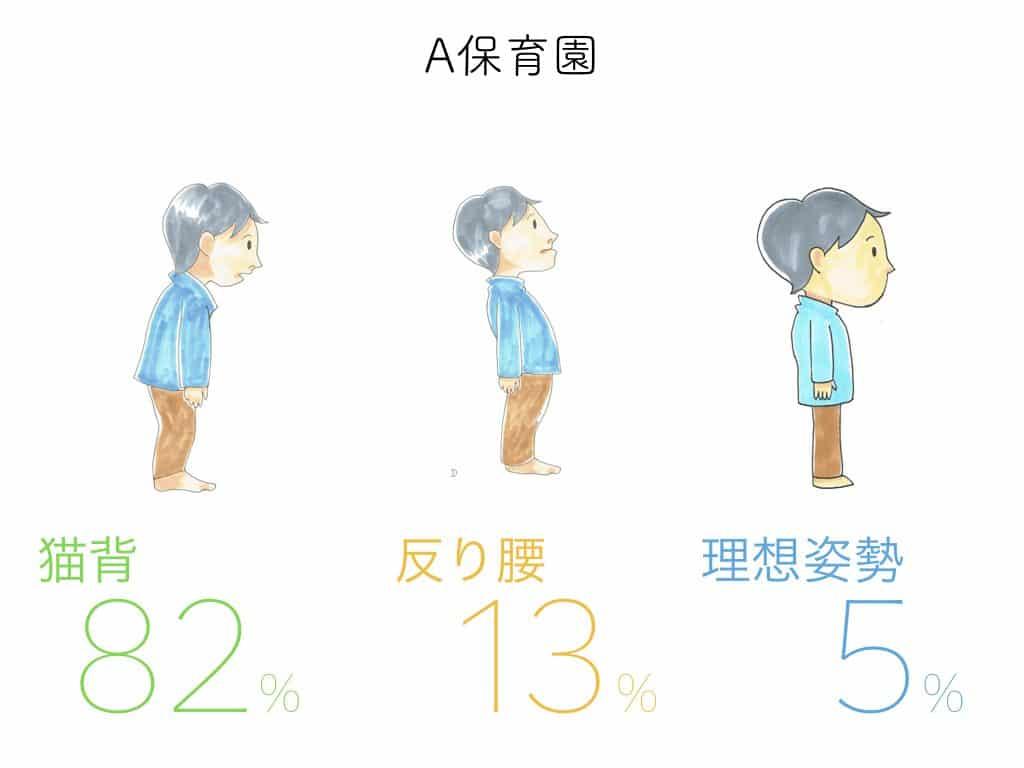
Percentage of defective attitudes (Daycare A)
Hunchback: 82%.
Warped back: 13%.
The percentage of children with ideal posture was considerably lower at 5%. These figures suggest that heel center of gravity due to toe deformity leads to hunching and bowing as a compensatory action for balance.
S nursery school
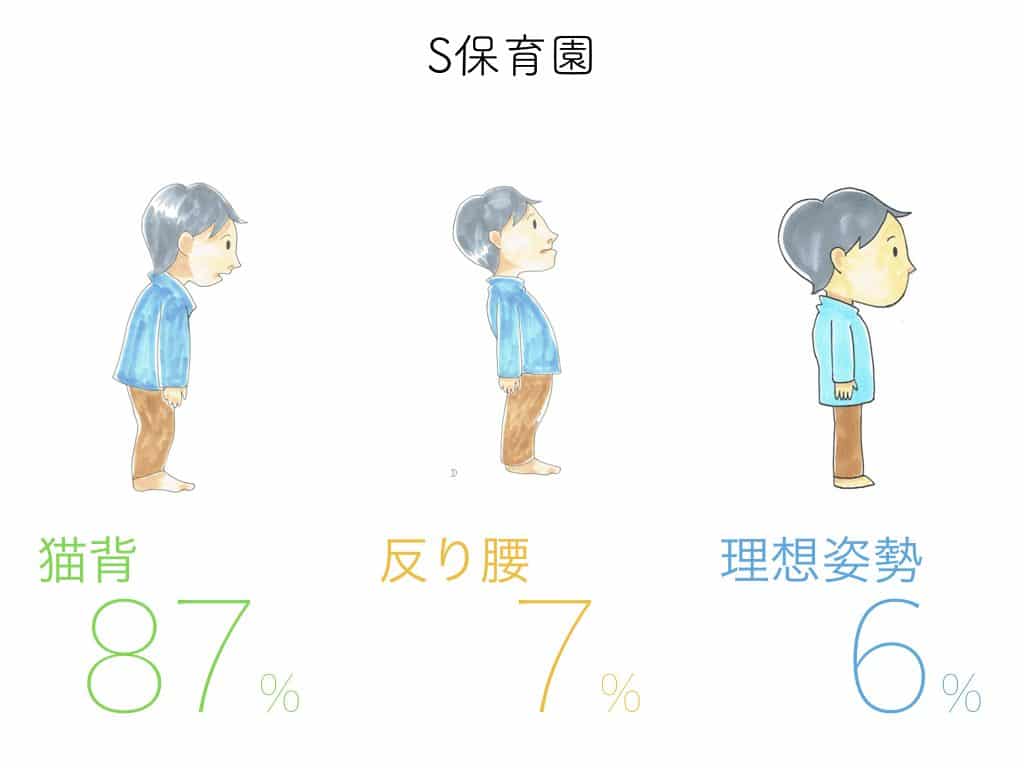
Percentage of defective posture (S nursery school)
Hunchback: 87%.
Warped back: 7%.
The percentage of children with ideal posture was much lower, 6%, as in Nursery A. These figures suggest that a heel center of gravity due to toe deformity leads to hunching and warping of the back as a compensatory action for balance.
Percentage of leg deformation
Nursery A
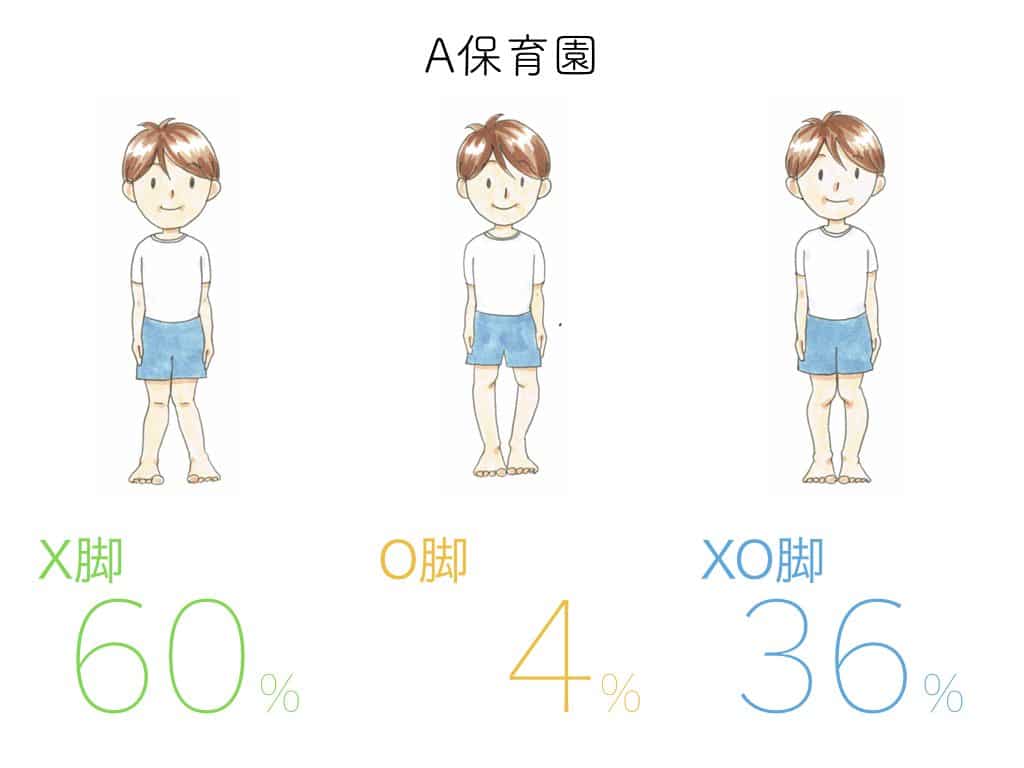
Percentage of leg deformities (Nursery A)
X-legs: 60
O-legs: 4%.
XO leg: 36%.
No child had ideal straight legs. If the thumb is not used, the child is more likely to have X-legs, and if the little finger is not used, the child is more likely to have O- or XO-legs.
S nursery school
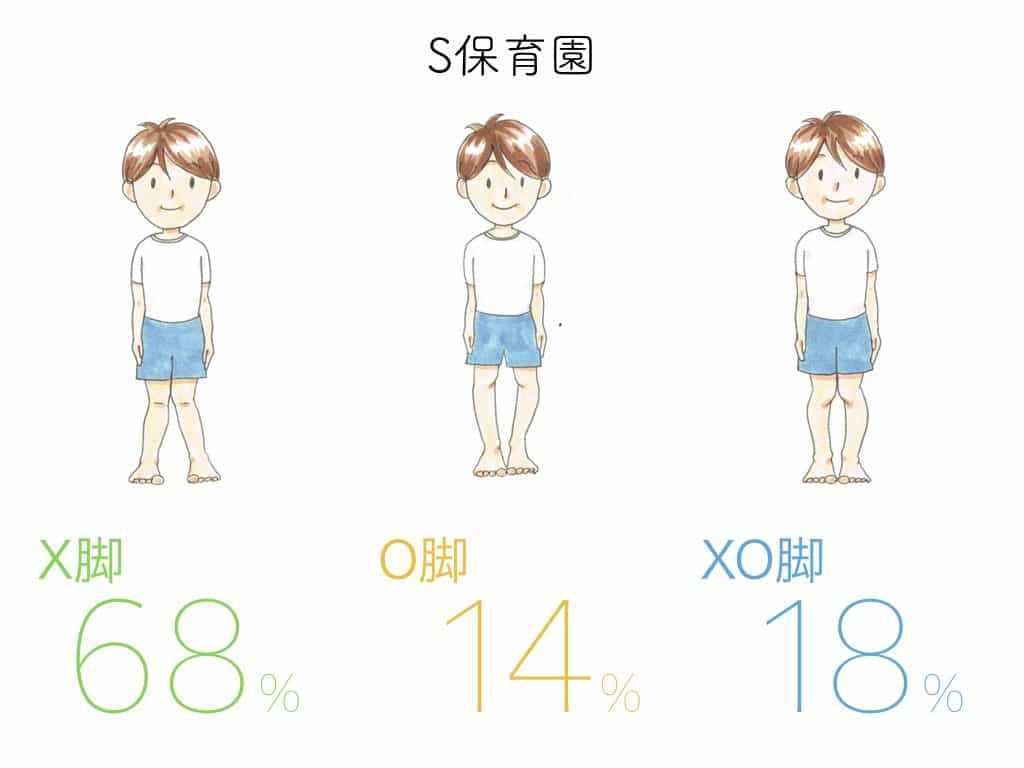
Percentage of leg deformities (S nursery school)
X-legs: 68%.
O-legs: 14%.
XO leg: 18%.
There were no children with ideal straight legs in the S nursery either. Surprisingly, more children had X legs than O legs.
Percentage of straight necks
Nursery A

Percentage of straight necks
Nursery A: 91%.
Hunching over and warping back make it easier to develop a straight neck. Considering that more than 90% of the children had poor posture, the numbers were predictive of abnormalities in the cervical spine as well.In the future, it can easily cause stiff shoulders, stiff necks, headaches, etc.Figures suggest that toe deformity → heel center of gravity → poor posture → straight neck. These figures suggest that toe deformity → heel center of gravity → poor posture → straight neck.
S nursery school

Percentage of straight necks
S nursery school: 82%.
Hunching and warping backs are more likely to cause straight necks. Considering that more than 90% of the children had poor posture, this figure was predictive of abnormalities in the cervical spine as well, but it was 9% lower than that of Nursery A.In the future, it can easily cause stiff shoulders, stiff necks, headaches, etc.The following is a list of the most common problems with the
Stenotic dentition and ideal void
Nursery A
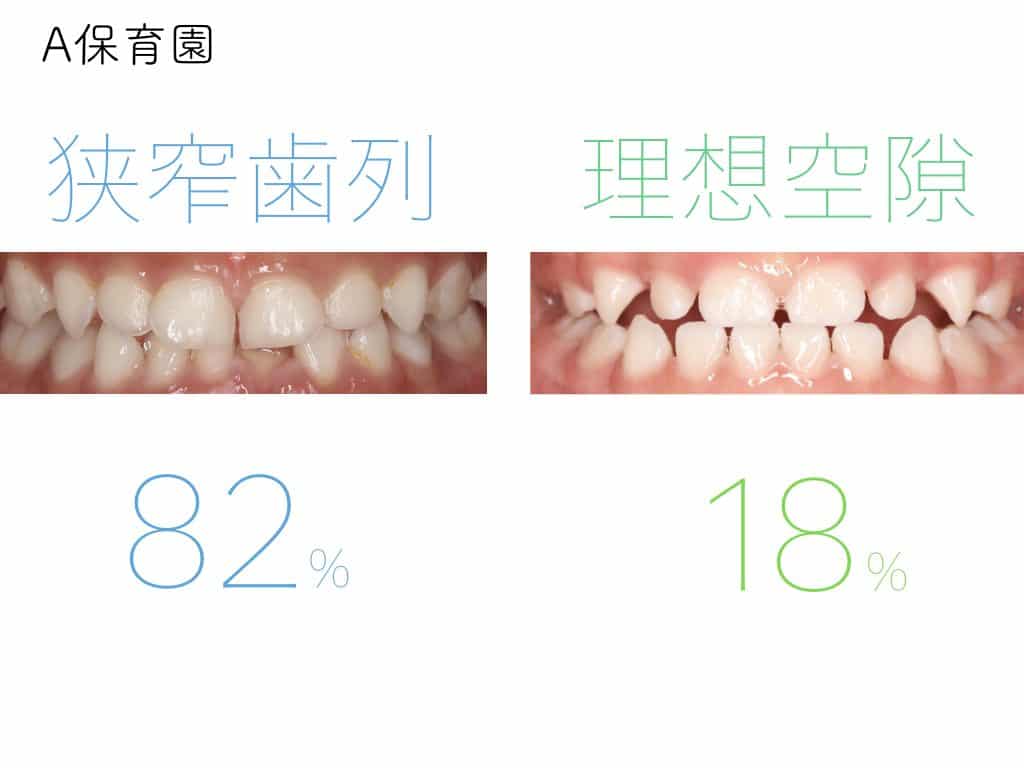
Percentage of stenotic dentition
Nursery A: 82%.
Poor jaw bone growth and lack of space for teeth to grow can lead to misaligned teeth in the future. Ideally, for baby teeth, there should be a gap between teeth. The figures suggest that toe deformity → heel center of gravity → poor posture → straight neck → narrow dentition.
S nursery school
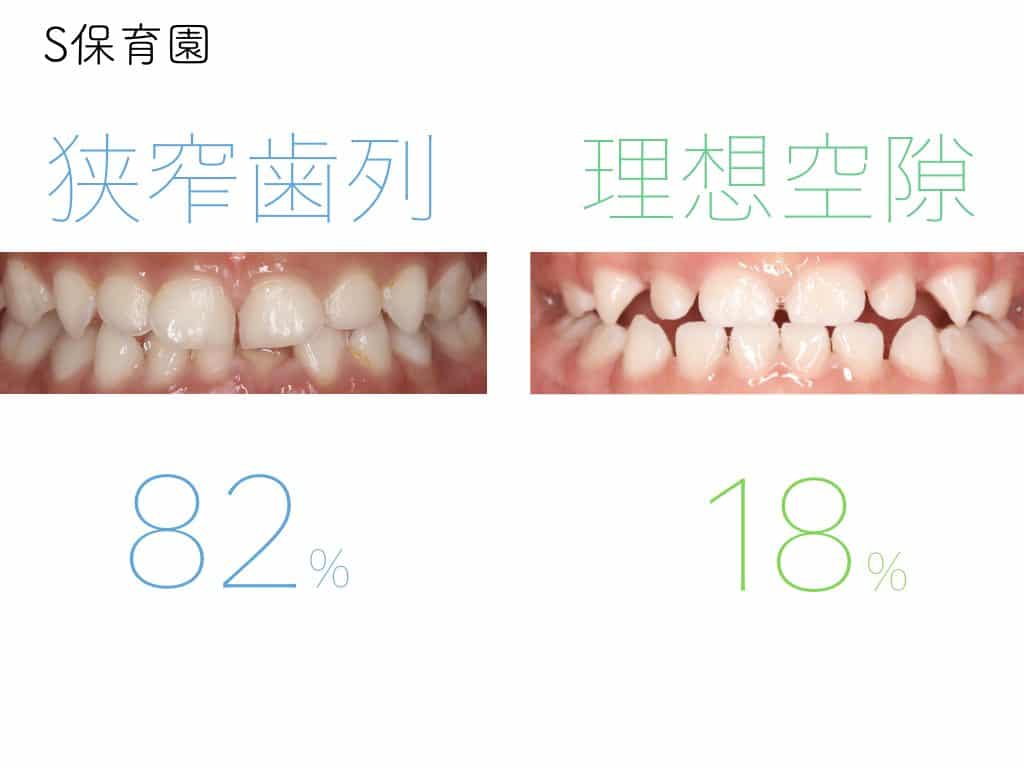
Percentage of stenotic dentition
S nursery school: 82%.
Similar to Nursery A, the percentage of stenotic dentition was 82%. Since dental checkups are only for periodontal disease and tooth decay, the presence of narrowed dentition in preschools is rarely pointed out. Therefore, most of the time, the misalignment of teeth is noticed when the permanent teeth come in at junior high school. If the narrowing dentition is known from nursery school, it is easier to take measures to promote jaw growth.
Overbite and Counterbite
Nursery A
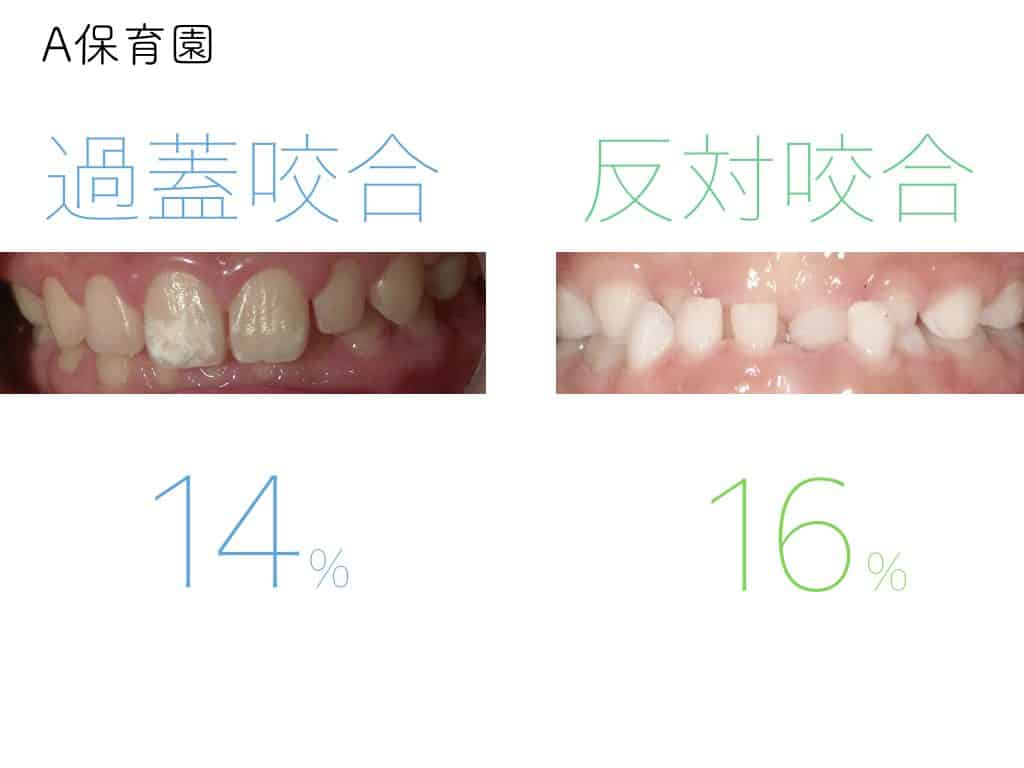
Overbite: 14%.
Counterbite: 16%.
Hunching and slouching can cause the jaw to move back and forth, which can easily lead to an overbite or crossbite.
S nursery school
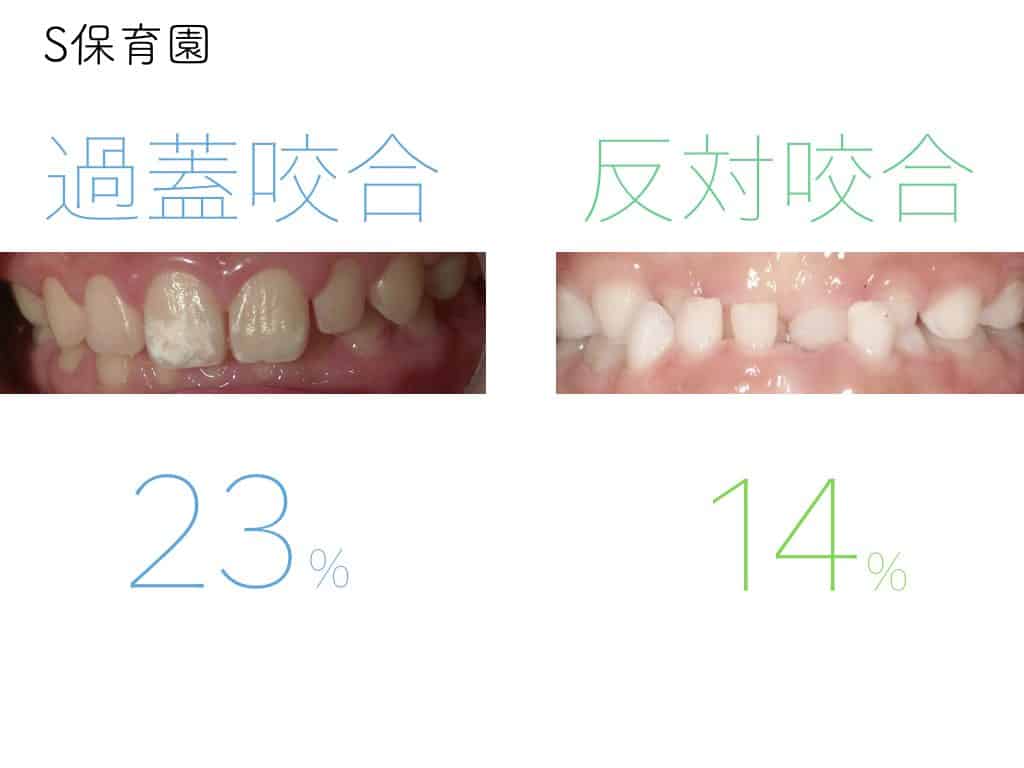
Overbite: 23%.
Counterbite: 14%.
This number suggests that toe deformity → heel center of gravity → poor posture → straight neck → overbite and counterbite. We believe this number is appropriate because the jaw is the top joint of the body. In the future, it is more prone to TMJ disorder.
Result of 2 months of HIRONOBA-METHOD once a day.
Toe deformity improved
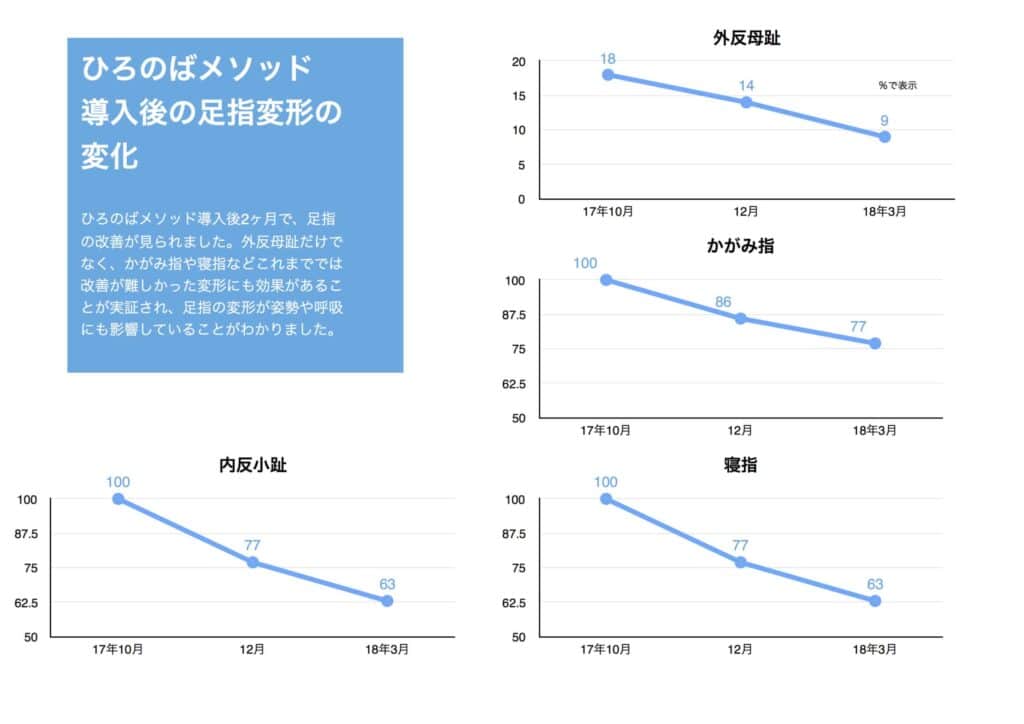
Improved number of toes on the ground
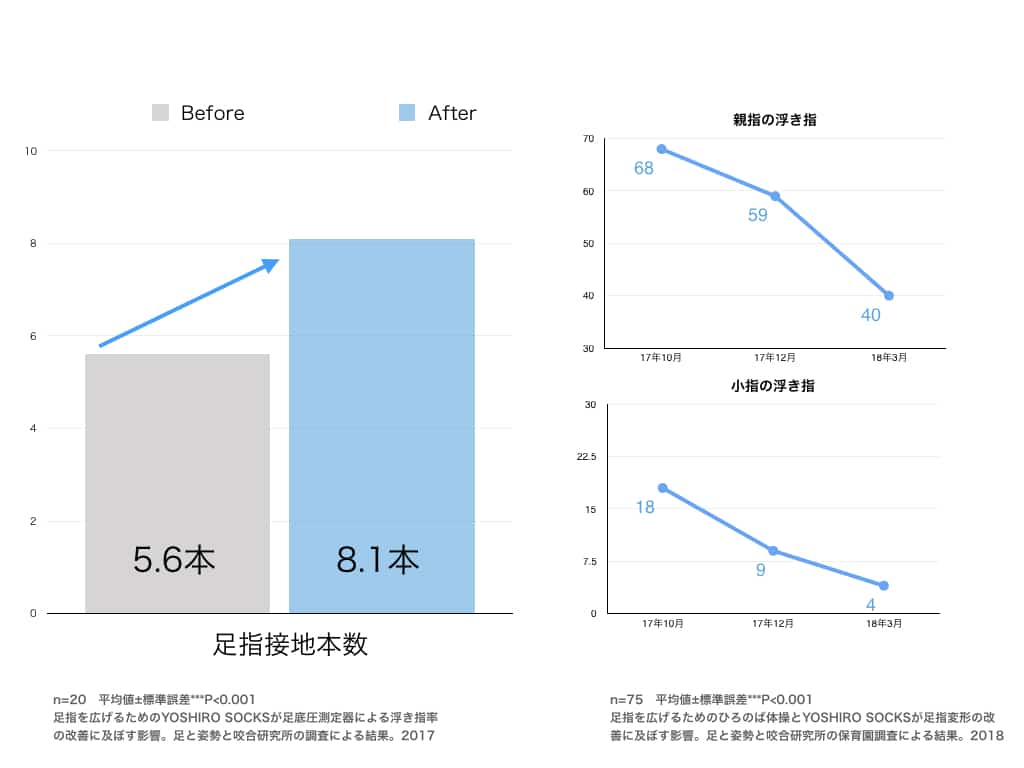
Improved poor posture and mouth breathing
